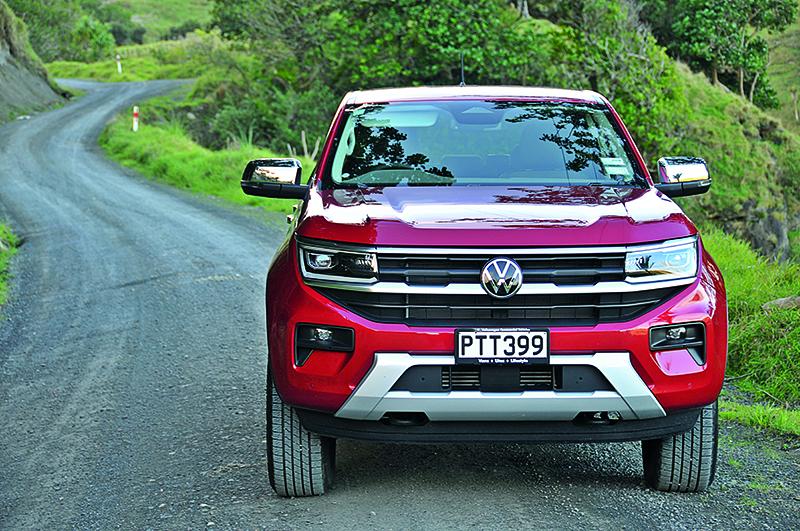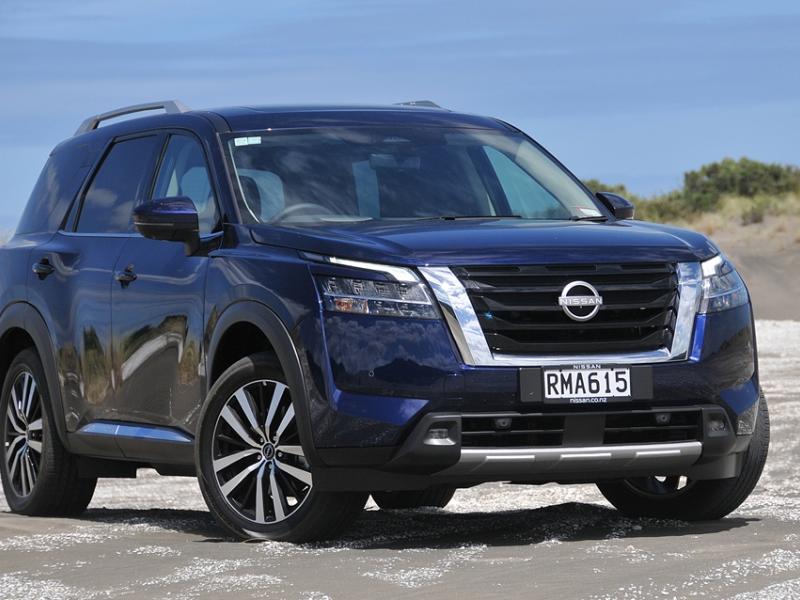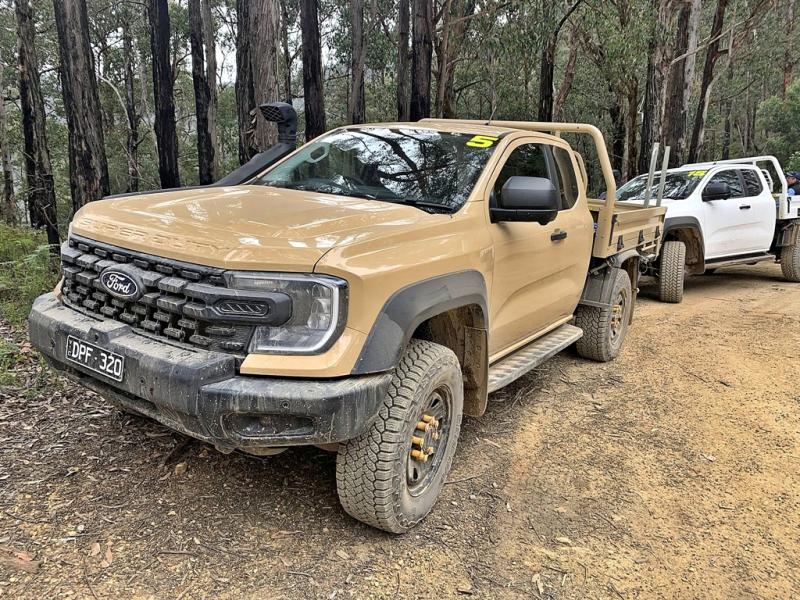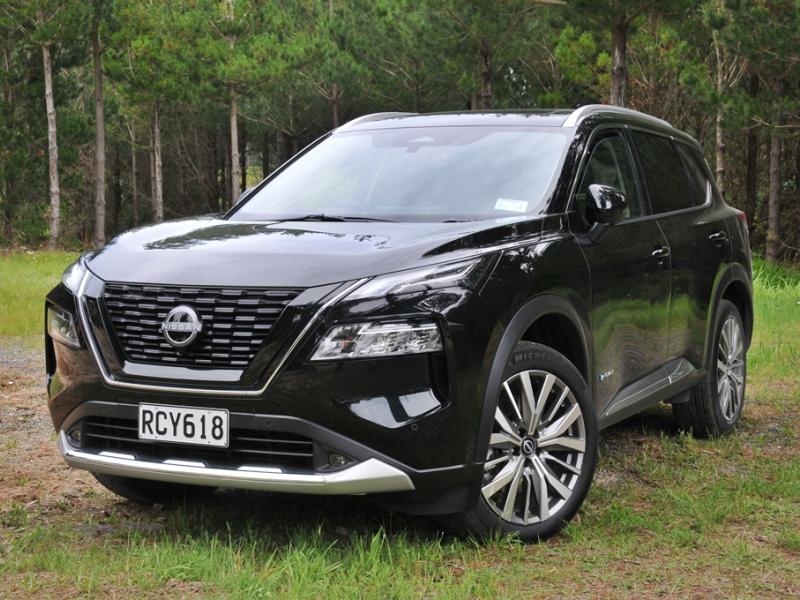A split-second decision at an intersection was all it took.
Exploring the limestone-pocked, storm scarred coastal ranges south of Port Waikato, we went right instead of left and found ourselves on a skinny ridge track barely wider than the Amarok Style.
Great blisters of clay interrupted the volcanic pumice and ash surface. Wild goats stared out of roadside manuka. A pair of heifers got the wrong idea and ran away down the road, forcing us to follow them for 500 metres or so before pushing through a gate and into a hillside paddock.
All the while the sun was edging down to the horizon, and in the growing gloom the visibility was turning pretty ordinary.
Phone signal? Nope. Fortunately, the Style’s navigation picked up where Google Maps left off, and revealed our rookie error. Deepest, darkest Waikato stretched out before us, and we were aimed somewhere south of Naike.
So a u-turn, a drive back to the other road and a careful drive down an even narrower trail that brought us out in darkness to Onewhero – relative civilisation. On the bright side, we got our photos and a lot more drive time than expected.
The new Amarok range is one of the clearest examples of ‘layered’ specs we’ve seen in a while. Starting with the range-entry Life the range sets a comprehensive basic spec – so the Style simply adds to the spec sheet of the Life.
Amarok aims to deliver as much value for money as possible from the earliest possible opportunity, which means the Life is bristling with Amarok features which sets the standard for the utes which come after it.
Step up a level, though, and the Amarok Style has the full-fat 2.0-litre bi-turbo engine and ten-speed auto transmission.
The engine makes 154kW at 3,750rpm and a full 500Nm of torque between 1,750rpm and 2,000rpm. Quite a narrow torque band, but makes sense when it’s sent through that ten-speed auto. Like the rest of the range, the Style complies with the Euro5 emissions standard.
The Style has the lowest emissions and best fuel economy of the range. We picked it up with 11.1 showing on the dash display, and dragged it down to 8.5 with little problem. On the highway the official figure should be easy to hit.
Drive formats are 2-hi (rear wheel drive), 4-hi and 4-lo. Front-rear drive split in 4-hi and 4-lo are 50/50 and they are not for use on tarmac.
The Style attracts a lower clean car tax than the Life: $4,485.
The 5.362m long, 1.871m high Amarok Style sits on 18-inch Armadura alloy wheels with 255/65/18-inch rubber. Bigger wheels, lower profile tyres add up to improved steering input/feedback and interestingly no increase in road noise or harshness. All Amarok variants wear 255-wide radials.
The Amarok Style’s GVM of 3280kg and tare weight of 2,335kg gives a 945kg payload and a towing capacity of 3500kg braked with a downward tow-ball load of 350kg.
In terms of its design, the Amarok’s most significant feature is in the nose. The design is distinctively VW, a very European look.
With its IQ Matrix headlights, LED fog lights and daylight running lights the Style is very much on-message with the rest of the range. Our unplanned evening ramble did suggest a set of spotlights would be handy out in ‘real New Zealand’; though owners who mostly drive in urban areas would find the stock lights fine.
Like the Life, Style has a comprehensive range of safety features, including adaptive cruise control, forward collision warning front assist with autonomous emergency braking, lane keep assist, junction assist, blind spot monitoring and rear cross traffic alert, rear view camera, tyre pressure monitoring, speed sign recognition, front and rear park distance control, collision-mitigation braking and the anticipated airbags, ESP, ABS and brake booster system. All of which delivers a range-wide five-star ANCAP safety rating.
The lane-keeping system is truly modern and gives the driver a graphic indication of the road format in the centre of the all-digital 12.3-inch dash. The steering wheel assistance is gentle but insistent. Out in the back of beyond, lane-keep registers that there are no road markings and goes idle.
Inside, there’s wireless phone charging, app connect with Mirrorlink, a 6-speaker audio system controlled by the vertical 12-inch touchscreen.
Style has a feature-loaded leather multifunction steering wheel but no paddle-shifters. Instead, there’s a ‘+/-’ pair of buttons on the side of the mouse-shaped shifter. All up, paddles are more user-friendly because they allow the driver to keep both hands on the wheel.
Behind the wheel, the added wheelbase length (3,270mm) and track width – and the suspension – add up to a smooth, composed ride even in 2-hi. On the gravel tracks we accidentally explored, 4-hi was ample. We never needed to lock the diff even in the long clay bog we encountered while lost.
When torque got the better of traction, the truck communicated that to the driver.
Switching into 4-hi tamed that down immediately. When we emerged at Onewhero, we switched back to 2-hi, briefly wishing for that magic ‘4-A’ setting that is becoming commonplace these days.
The 18-inch wheel/tyre combo means the Style is an easy and enjoyable drive on all surfaces.
We hear VW expects this to be the pick of the bunch sales-wise. That would not surprise.







